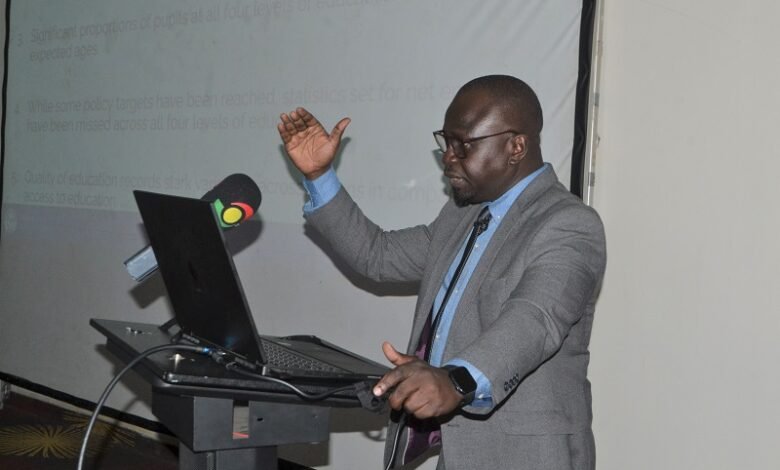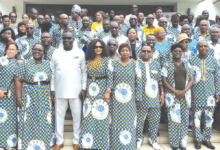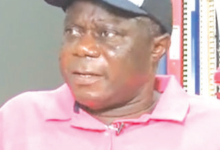
Although access to education has steadily increased for the past two decades, quality of education has fluctuated, a Ghana Statistical Service National Education Statistics report has revealed.
The report said over the two decades, the Pupil Teacher Ratio (PTR) saw a slight decline across three education levels (kindergarten, primary and junior high school (JHS), with some fluctuations.
However, at the primary level, the PTR increased to approximately 38 pupils per teacher in 2022/23, up from about 33 in the 2001/02 academic.

the report Photo: Victor A. Buxton
It further explained that Pupil to Trained Teacher Ratio (TTR) for both kindergarten and primary levels recorded remarkable improvements in the decade 2010/11 to 2020/21, reducing from over 90 pupils to a trained teacher to about 35 for kindergarten and from about 55 to about 31 pupils to a trained teacher for
primary school.
The maiden report, titled ‘Access to and Quality of Basic and Secondary Education in (2000-2023)’, also said gender gaps in quality of education was more pronounced in English and Mathematics at both JHS and Senior High School (SHS) levels.
The report, developed by GSS in collaboration with the Ministry of Education, provides detailed analysis of the state of basic and secondary school education in the country and considers issues such as enrolment rate, teacher availability, infrastructure, and regional disparities.
It further said significant proportions of pupils at all four levels of education (kindergarten, primary, JHS and SHS) were not within expected ages.
While some policy targets had been reached, statistics set for net enrolment (which measures age-appropriate enrolment) had been missed across all the four levels.
Speaking at the launch in Accra yesterday, the Minister of Education, Haruna Iddrisu, said the Ministry would collaborate with GSS to use administrative data to promote inclusive education.
He said the report would inform the National Education Reform and pledged that the government would continue to invest more in education.
The minister reaffirmed the government’s commitment to investing in teacher training, the development of new curriculum, and robust information technology infrastructure to facilitate digital education.
The Government Statistician, Professor Samuel K. Annim, described the report as the first detailed analysis by the GSS of trends in basic and secondary school education in the country.
He said the report revealed that between 2001 and 2003, Kindergarten Gross Enrolment (GER) Rates, which do not consider age-appropriate enrolment, more than doubled from 51 per cent to 122 per cent, while the primary GER increased from 80 to 90 per cent, JHS GER from 64 to 98 per cent and SHS GER almost tripled from 25 to 72 per cent.
“Despite high GER, statistics on Net Enrolment Rates (NER) indicate that significant proportions of pupils’ at all four levels of education were not within expected ages. In 2023, Kindergarten NER was 66 per cent, indicating that two in very three children aged 4 to 5 years were enrolled in kindergarten and eight in every 10 children (80 per cent) aged 6 to 11 years were enrolled in primary school. At the junior high school level, less than half of the children aged 12 to 14 years (47 per cent) were enrolled at the age-appropriate level,” Prof. Annim said.
The Executive Director of Africa Education Watch, Mr Kofi Asare, who chaired the programme, lauded the GSS for the effort to examine education in the country.
He said the report would inform the new medium-term education policy (2026 to 2029) being developed by the government.
The Danish Ambassador to Ghana, Tom Norring, said the report was developed with technical support from the Danish Government as part of its co-operation with the GSS.
He said the report would help improve the effective allocation of resources in the education sector.
BY KINGSLEY ASARE







